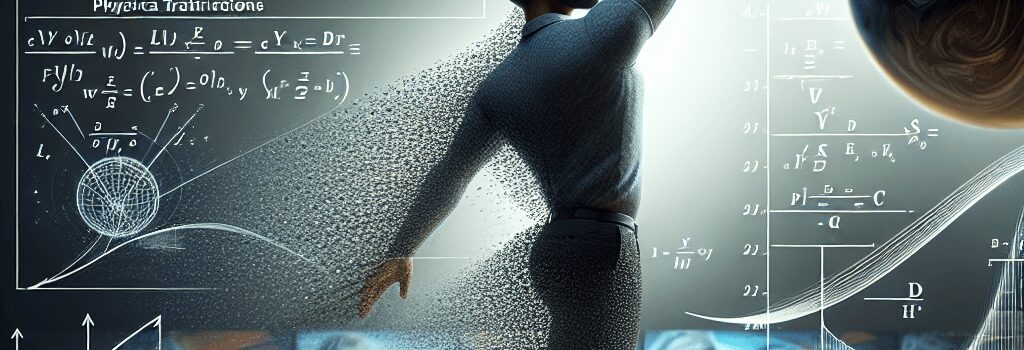The Physics of Precision: Mastering Bowling Through Advanced Kinematics

Recent advancements in the mathematical modeling of bowling mechanics have brought a new level of insight into achieving consistent strikes. By employing a set of six differential equations tailored to the behavior of a rotating rigid body, engineers and sports scientists alike are delving into the subtleties of angular momentum, friction, and body dynamics to define the best strike conditions.
The Mathematics Behind the Strike
At the core of this innovative model lies a system of six differential equations, derived from the fundamental principles of rigid body dynamics. These equations take into account the rotational motion under the influence of external forces and frictional interactions with the lane. The model leverages Euler’s equations of motion to capture the complex interplay between the ball’s spin, precession, and nutation. Detailed analysis of these equations provides insights into how variations in initial velocity, angular momentum, and friction coefficients can influence the outcome of each throw.
Technical Analysis and Simulation
Advanced simulation tools are now being used to explore the parametric space of these equations. By running numerical simulations, experts can identify optimal conditions for achieving a strike. Some of the technical specifications include:
- Initial Conditions: Variables such as entry angle, spin rate, and speed are precisely defined to simulate realistic scenarios.
- Boundary Conditions: The effect of lane oil patterns and ball-surface contact are incorporated to adjust the frictional forces acting on the ball.
- Numerical Methods: Using finite difference and Runge-Kutta integration techniques, the model allows for real-time simulation of the ball’s trajectory.
This detailed approach enables not only the prediction of strike probabilities but also the customization of equipment specifications and training routines based on the player’s personal style.
Expert Insights and Practical Implications
Experts in sports physics and mechanical engineering have praised this model as a significant step forward in understanding the dynamics of sports equipment. Dr. Elena Morales, a leading researcher in sports mechanics, remarked, “The integration of rigid body dynamics with differential modelling provides players and coaches with a quantifiable method to optimize performance. The model’s accuracy in simulating realistic conditions is truly groundbreaking.”
Furthermore, professional bowling coaches are beginning to use these simulations to design tailored training programs. By understanding the influence of spin and roll, players can adjust their techniques to better control the ball’s movement from release to impact with the pins.
Deep Dive into Rigid Body Dynamics
The complex behavior of a bowling ball as it transitions from sliding to rolling is a classic example of rigid body dynamics. The six differential equations consider both translational and rotational dynamics, where the moment of inertia plays a crucial role. This analysis allows for the decomposition of movement into principal axes, enabling a more detailed study of factors such as:
- Spin Stabilization: Understanding how quickly the ball stabilizes its spin after release.
- Frictional Transition: Measuring the shift from kinetic friction during sliding to rolling resistance once the ball is in full rotation.
- Energy Dissipation: Quantifying how energy loss affects the overall trajectory and final impact force.
Such detailed investigations help in refining both the theoretical and practical aspects of the sport, providing a connection between advanced physics and everyday play.
Future Research and Technological Integration
Looking forward, there is a growing interest in integrating this physical model with emerging technologies such as AI and machine learning. These methods can further optimize simulation accuracy by continuously learning from real-world data, potentially leading to personalized recommendations for players. Opportunities for integration include:
- Real-Time Analysis: Using cloud computing platforms to rapidly analyze roll data during practice sessions.
- Data-Driven Coaching: Harnessing machine learning algorithms to adjust training regimes based on observed performance trends.
- Hardware Enhancements: Implementing sensor technologies in balls and lanes to collect high-fidelity data for ongoing research.
While the latest available news has not contributed new findings in this area, the existing foundation continues to stimulate interdisciplinary collaboration among physicists, engineers, and sports professionals.
Conclusion
This in-depth exploration of the physics behind a bowling strike reveals impressive potential for improving performance through advanced modeling techniques. By combining rigorous mathematical frameworks with cutting-edge technology, this approach is setting the stage for smarter, data-informed strategies in the sport of bowling. Whether through direct application on the lanes or via enhancements in training technology, the fusion of traditional physics and modern computation is transforming the art and science of the perfect strike.